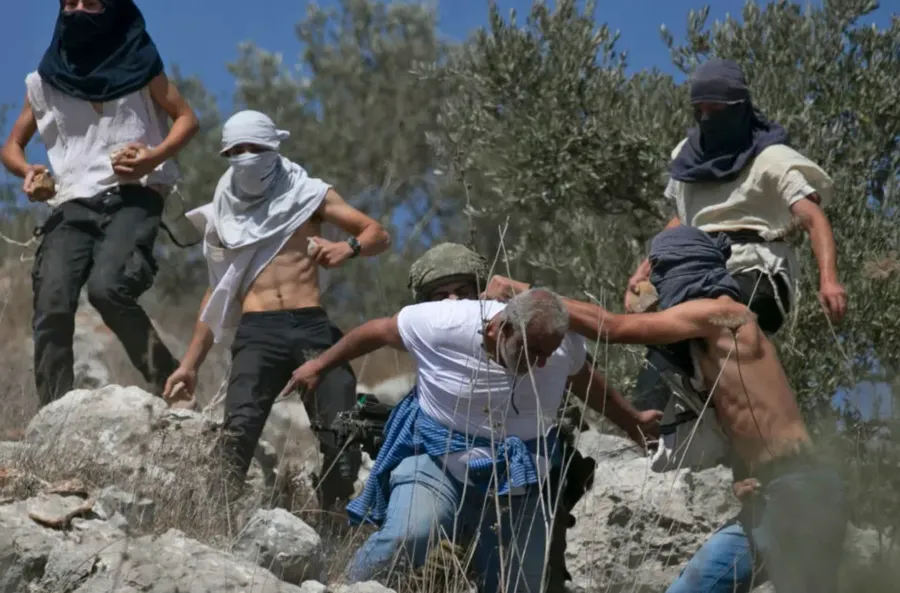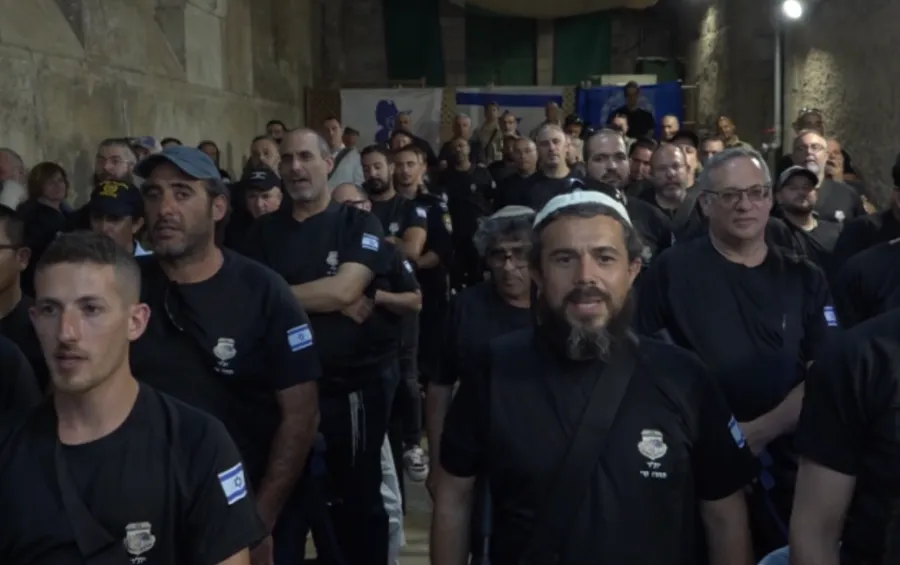Blood in the Hills: Settler Violence in the West Bank
by u/DemosthenesRex
In the early hours of a summer morning in the hills north of Jericho, an entire Bedouin hamlet, its families, livestock, and belongings, vanished under the weight of exhaustion and fear. This was not the result of a military incursion or aerial bombardment, but a slow, methodical campaign of violence and intimidation by Israeli settlers. Their repeated incursions, often conducted with impunity and occasionally under the watchful eyes of state security forces, culminated in acts of forced displacement, the latest in a disturbing trend that has intensified dramatically since October 7, 2023. This single incident encapsulates a broader pattern of violence that is reshaping the West Bank in ways both immediate and historically resonant.
The post-October 7 period has ushered in a new chapter in the Israeli-Palestinian conflict, one in which the lines between official state policy and settler vigilantism have grown increasingly indistinct. While the world has been transfixed by the war in Gaza, another, less televised war has unfolded across the West Bank. A campaign of arson, shootings, property destruction, and targeted expulsions carried out by settlers emboldened by Israel’s far-right government. International human rights observers, from the United Nations to Doctors Without Borders, have warned that the cumulative effect of these attacks constitutes not merely isolated violence but a systematic effort to alter the demographic and geographic reality of the West Bank under the guise of security.
The roots of settler violence in the West Bank are entwined with the broader architecture of the Israeli occupation, dating back to the post-1967 period when the first Jewish settlements were established in the occupied territories under the banner of strategic security and historical entitlement. While initially framed as civilian outposts, many of these settlements evolved into ideologically driven enclaves, often situated deep within Palestinian population centers and maintained through a matrix of state support and military protection. As legal ambiguity surrounding their status persisted, particularly under international law, which classifies them as illegal, successive Israeli governments adopted a posture of calculated ambivalence, tacitly enabling expansion through land appropriations and infrastructure development, even as they officially distanced themselves from settler vigilantism.
Over the decades, incidents of settler violence have become routinized forms of coercion, manifesting through what are euphemistically termed “price tag” attacks, acts of arson, property destruction, physical assault, and intimidation aimed at both Palestinians and, at times, Israeli security forces perceived as insufficiently protective of settler interests. Organizations such as B’Tselem have documented patterns of aggression that reveal a systematic effort not merely to terrorize but to incrementally displace Palestinian communities, particularly in Areas B and C of the West Bank. These acts frequently occur under the protective gaze or deliberate inaction of Israeli soldiers, who, whether constrained by rules of engagement or influenced by political alignment, often fail to intervene, thereby fostering a climate of near-total impunity.

Masked Israeli settlers attack Palestinian olive farmers in the West Bank, October 2020 (Getty Images/BBC)
The institutionalization of settler violence cannot be divorced from the ideological ethos that informs it: a theological and nationalist vision of territorial redemption wherein the use of force against Palestinians is not merely tolerated but sacralized. Israeli state institutions, while occasionally condemning particularly egregious incidents for international audiences, have done little to dismantle the infrastructural, legal, and economic scaffolding that allows settler violence to persist and, in many areas, intensify. The result is a strategic use of violence that operates in tandem with formal policy, reinforcing the broader goal of maximal land control with minimal Palestinian presence.
Since the October 7 Hamas attacks and Israel’s subsequent war in Gaza, the occupied West Bank has experienced a dramatic and underreported escalation in settler perpetrated violence against Palestinians. According to data compiled by Al Jazeera and corroborated by field reports from the United Nations Office for the Coordination of Humanitarian Affairs (OCHA), over 1,800 distinct attacks have been recorded since the conflict began, ranging from property destruction and beatings to fatal shootings and village expulsions. While settler violence has long been a feature of life under occupation, the current wave is unprecedented in both intensity and geographic spread, encompassing not only traditional flashpoints near ideologically extreme settlements but also agricultural zones deep in Area C, where Israeli security control is legally codified under the Oslo framework.
These attacks appear neither spontaneous nor disconnected from state structures. Multiple investigations, including those by NPR and Crisis Group, document patterns of coordinated action between settlers and Israeli soldiers, who often either provide cover or refrain from intervention during assaults. In some cases, soldiers themselves have joined in the violence or facilitated the creation of ad hoc "security perimeters" that amount to forcible expulsions of Palestinian families. Particularly vulnerable are pastoral and farming communities, many of which have been displaced en masse in the months since October, losing access to water sources, grazing land, and ancestral property under duress from armed settlers acting with impunity.
Rather than existing at the margins of the conflict, this surge in settler violence represents a strategic shift in how power is exercised over Palestinian life and territory in the West Bank. The Gaza war has functioned as both distraction and justification, allowing settler groups and sympathetic political actors to advance longstanding ambitions of consolidating Jewish control over contested spaces while international focus remains on the southern front. Far from being a security response to Hamas, these actions suggest a settler-driven logic of territorial acquisition masquerading as counterinsurgency. The silence or inertia of Israeli authorities in the face of this violence signals not only complicity but also a calculated political permissiveness, one that normalizes a state of exception where the rule of law is selectively applied or wholly abandoned.
The Israeli government’s response to the violence has not merely been one of negligence but reflects a deeper entanglement between state institutions and ideologically driven settler movements. Far-right ministers such as Itamar Ben Gvir and Bezalel Smotrich have leveraged their portfolios to shield settlers from accountability while redirecting state power to reinforce the settlement enterprise. Under their influence, enforcement of law in the West Bank has become not only inconsistent but selectively weaponized: settler-perpetrated violence is often met with indifference or procedural delay, while Palestinian protest or resistance is swiftly and aggressively suppressed. This dynamic has contributed to a bifurcated legal order, one where settlers operate with near impunity and Palestinians live under permanent threat. The recent establishment of civilian enforcement squads, composed in part of settlers themselves, exemplifies how state authority is being decentralized and delegated to partisan actors with a direct stake in dispossession.

New recruits in the police's West Bank 'First Response' civilian squads attend a ceremony inaugurating unit's launch at the Tomb of the Patriarchs, Hebron, on July 9, 2025. (Screenshot/Israel Police)
This symbiosis between settler militancy and state endorsement is not incidental. It is a feature of the current governing coalition, which relies heavily on ultra-nationalist and religious Zionist factions for political survival. In exchange for their support, these factions have been granted significant control over land policy, policing, and funding mechanisms in the occupied territories. Their ideological project, a maximalist vision of Jewish sovereignty over all of historic Palestine, translates into policy through land seizures and bureaucratic obstruction of Palestinian life. Within this context, settler violence is not an aberration but a tool, a form of grassroots coercion that complements state-backed expansion while outsourcing the cost of enforcement. The result is a creeping normalization of ethno-nationalist vigilantism, sanctioned, if not orchestrated, by those at the helm of state power.
The current wave of settler violence in the West Bank cannot be divorced from the broader trajectory of the Arab-Israeli conflict; rather, it must be understood as a manifestation of the enduring contest over land and identity. While often treated in diplomatic discourse as isolated or marginal, these acts of aggression, home invasions, arson, armed intimidation, and displacement, are embedded in a decades long project of incremental annexation. The settler movement, particularly in ideologically driven enclaves, sees its mission not merely as the defense of Jewish communities but as the actualization of an ethno-nationalist vision that negates the legitimacy of Palestinian presence. In this sense, settler violence functions not only as a mechanism of coercion but as a form of grassroots statecraft aimed at unilaterally redrawing the territorial and demographic map of the West Bank.
From the Palestinian perspective, this violence is indistinguishable from the broader occupation, and in many cases, it is perceived as a more immediate and unmediated form of dispossession than the Israeli military’s operations. Whereas the state’s bureaucratic apparatus can displace via permits, zoning, and military orders, settlers act with impunity and speed, burning olive groves, raiding homes, and assaulting villagers with little fear of legal consequence. This dual structure of control, formal and informal, administrative and paramilitary, reinforces a sense among Palestinians that they are subject not simply to a military occupation, but to a regime in which non-state actors are effectively deputized by state institutions.
In the context of the current war with Hamas, settler violence in the West Bank has taken on an even more strategic character. With global attention consumed by the devastation in Gaza, extremist factions within the settler movement have seized the moment to intensify campaigns of intimidation and displacement in the hills of the West Bank. Simultaneously, Israel’s security apparatus has deprioritized protection for Palestinian communities, citing resource constraints or counterterrorism imperatives in Gaza and the north. This has created a permissive environment in which settler groups act with near-total impunity, contributing to what many observers describe as a silent annexation. Far from being a distraction from the Gaza war, the escalation of settler violence serves a complementary function: consolidating control over the West Bank while the international community remains fixated elsewhere.
The current escalation of settler violence is not an episodic or fringe development. It is a manifestation of systemic policy choices and long-standing state complicity. Far from being random acts of extremist aggression, these assaults reflect a strategic continuum of coercion, intended to consolidate Israeli territorial control by making Palestinian presence in rural areas untenable. The confluence of state-backed settlement expansion, political impunity, and ideologically driven security frameworks has transformed the West Bank into a landscape of lawlessness, where one population operates under military occupation and another under de facto sovereign immunity. The state's selective enforcement of law and the political protection afforded to settler groups expose a dual regime in which violence against Palestinians is either unofficially sanctioned or bureaucratically obscured.
Such violence has far-reaching implications not merely for Palestinians, but for the broader trajectory of the Israeli-Palestinian conflict and the viability of any future political resolution. The entrenchment of settler activity, both violent and administrative, effectively forecloses the possibility of a contiguous Palestinian state, rendering two-state diplomacy increasingly performative. International actors, particularly those who claim to uphold a rules-based order, face a growing credibility crisis when they continue to fund, arm, or diplomatically shield a state apparatus that facilitates or tolerates population displacement. The normalization of settler vigilantism thus becomes not only a domestic Israeli crisis but a regional and global moral failure, implicating all actors who enable its persistence through silence or complicity.
To view the West Bank's current crisis as merely a byproduct of the Gaza war is to fundamentally misread the strategic logic at play. Settler violence operates with its own political momentum, intertwined with but not subordinate to broader military campaigns. Unless there is sustained international pressure, both diplomatic and economic, to curb this violence and dismantle the legal architecture that enables it, the situation on the ground will continue to deteriorate. What is unfolding is not only a humanitarian emergency, but a deliberate reconfiguration of the territorial and demographic realities that undergird the Israeli-Palestinian conflict. The stakes, therefore, are not confined to a narrow theater of rural aggression, but extend to the very future of coexistence and state legitimacy in the region.